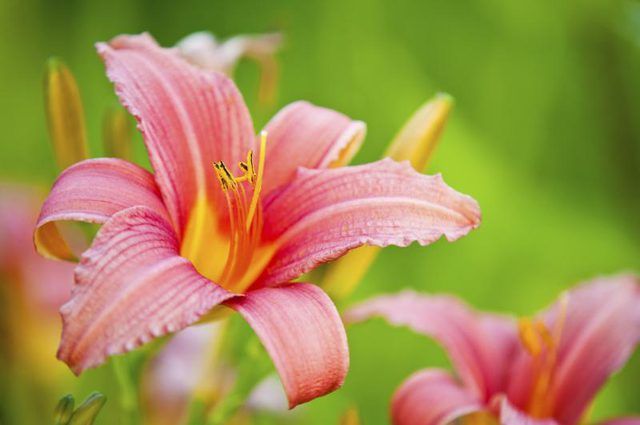Bulbs
Flower Basics
Flower Beds & Specialty Gardens
Flower Garden
Garden Furniture
Garden Gnomes
Garden Seeds
Garden Sheds
Garden Statues
Garden Tools & Supplies
Gardening Basics
Green & Organic
Groundcovers & Vines
Growing Annuals
Growing Basil
Growing Beans
Growing Berries
Growing Blueberries
Growing Cactus
Growing Corn
Growing Cotton
Growing Edibles
Growing Flowers
Growing Garlic
Growing Grapes
Growing Grass
Growing Herbs
Growing Jasmine
Growing Mint
Growing Mushrooms
Orchids
Growing Peanuts
Growing Perennials
Growing Plants
Growing Rosemary
Growing Roses
Growing Strawberries
Growing Sunflowers
Growing Thyme
Growing Tomatoes
Growing Tulips
Growing Vegetables
Herb Basics
Herb Garden
Indoor Growing
Landscaping Basics
Landscaping Patios
Landscaping Plants
Landscaping Shrubs
Landscaping Trees
Landscaping Walks & Pathways
Lawn Basics
Lawn Maintenance
Lawn Mowers
Lawn Ornaments
Lawn Planting
Lawn Tools
Outdoor Growing
Overall Landscape Planning
Pests, Weeds & Problems
Plant Basics
Rock Garden
Rose Garden
Shrubs
Soil
Specialty Gardens
Trees
Vegetable Garden
Yard Maintenance
How to Grow Daylilies
How to Grow Daylilies. Daylilies (Hemerocallis spp.) are low-maintenance, versatile garden perennials that are notable for their showy, trumpetlike blooms and graceful, arching leaves. Often massed together to create a border or backdrop, daylilies are also effective when grown as ground cover or a means to control erosion on a stream bank or...

Daylilies (Hemerocallis spp.) are low-maintenance, versatile garden perennials that are notable for their showy, trumpetlike blooms and graceful, arching leaves. Often massed together to create a border or backdrop, daylilies are also effective when grown as ground cover or a means to control erosion on a stream bank or hillside. Daylilies require minimal maintenance and care to look their best.
Plant Where Hardy
Daylilies are perennial, or hardy, in U.S. Department of Agriculture plant hardiness zones 3 through 10, where they will grow in full sunlight to light shade. Filtered sunlight or morning sunlight with some afternoon shade is generally ideal for most kinds of daylilies. Afternoon shade is especially valuable for darker-flowered cultivars because the hot sunlight may cause the petals to fade. Overly shady conditions, however, can limit flower production.
Early fall and early spring are the best times to plant daylilies, though in USDA zones 7 through 10 they tolerate being planted anytime of year. Provide 18 to 24 inches of space between plants.
Plant in Well-Draining Soil
Although daylilies' best growth occurs when they are planted in somewhat acidic soil -- pH 6 to 6.5 -- enhanced with organic matter, they are not picky about soil as long as it is well-draining. In poorly draining, clay soil, daylilies may rot. Though tolerant of heat and drought, daylilies benefit from an occasional deep watering during long dry periods. Wait for their soil to dry out before watering it again.
Fertilize the plants individually in early spring with 1 or 2 tablespoons per plant of a 0-20-20 or 5-20-20 dry fertilizer. Water the site well afterward to disperse fertilizer into the soil, and store unused fertilizer in a secure location away from children and pets.
Keep Plants Tidy
Prune daylilies throughout the growing season to remove damaged and diseased foliage, and cut the plants down to a few inches above ground once their flowers are spent in fall. Disinfect pruning equipment before and afterward by soaking it for five minutes in a solution that is 1 part bleach and 3 parts water.
Mulch daylilies' soil surface with a 2- to 3-inch-thick layer of organic matter, such as shredded bark or leaf compost, to retain moisture in the soil and to help prevent competitive weeds, but don't allow the mulch to touch the plants. Remove all weeds as they appear to keep the growing area tidy and to remove potential hiding places for slugs and snails.
Revitalize crowded beds of daylilies by dividing the plants after their flowering ends in fall. With a garden fork, lift a clump of daylilies out of the soil, shake excess soil off them and gently separate them into individual sections of roots and leaves. Replant the sections in the garden, and water the planting site well.
Check for Pests
Common sap-sucking garden pests such as aphids, thrips and mites may attack daylilies' foliage and flower buds, resulting in a loss of vigor and damaged new growth in the plants. Forfeit the use of broad-spectrum insecticides, which kill beneficial predators, in favor of insecticidal soap. Mix 2 1/2 fluid ounces of insecticidal soap per 1 gallon of water, and use a hose-end or handheld sprayer to spray the mixture over each entire affect plant until it is wet. Apply the mixture up to three times every seven to 10 days. If aphids are the problem, then apply the mixture again after two days if it is needed.
Spray the solution on a windless, dry day when the target plants' leaves are below 85 degrees Fahrenheit. Do not allow solution to run into storm drains or natural waterways because it may harm aquatic invertebrates. Protect yourself by wearing gloves, a long-sleeved shirt, long pants, socks, closed-toe shoes, a hat and goggles; avoid breathing the insecticidal soap and the solution when mixing and applying it. Store unused insecticidal soap in a secure location away from children and pets.